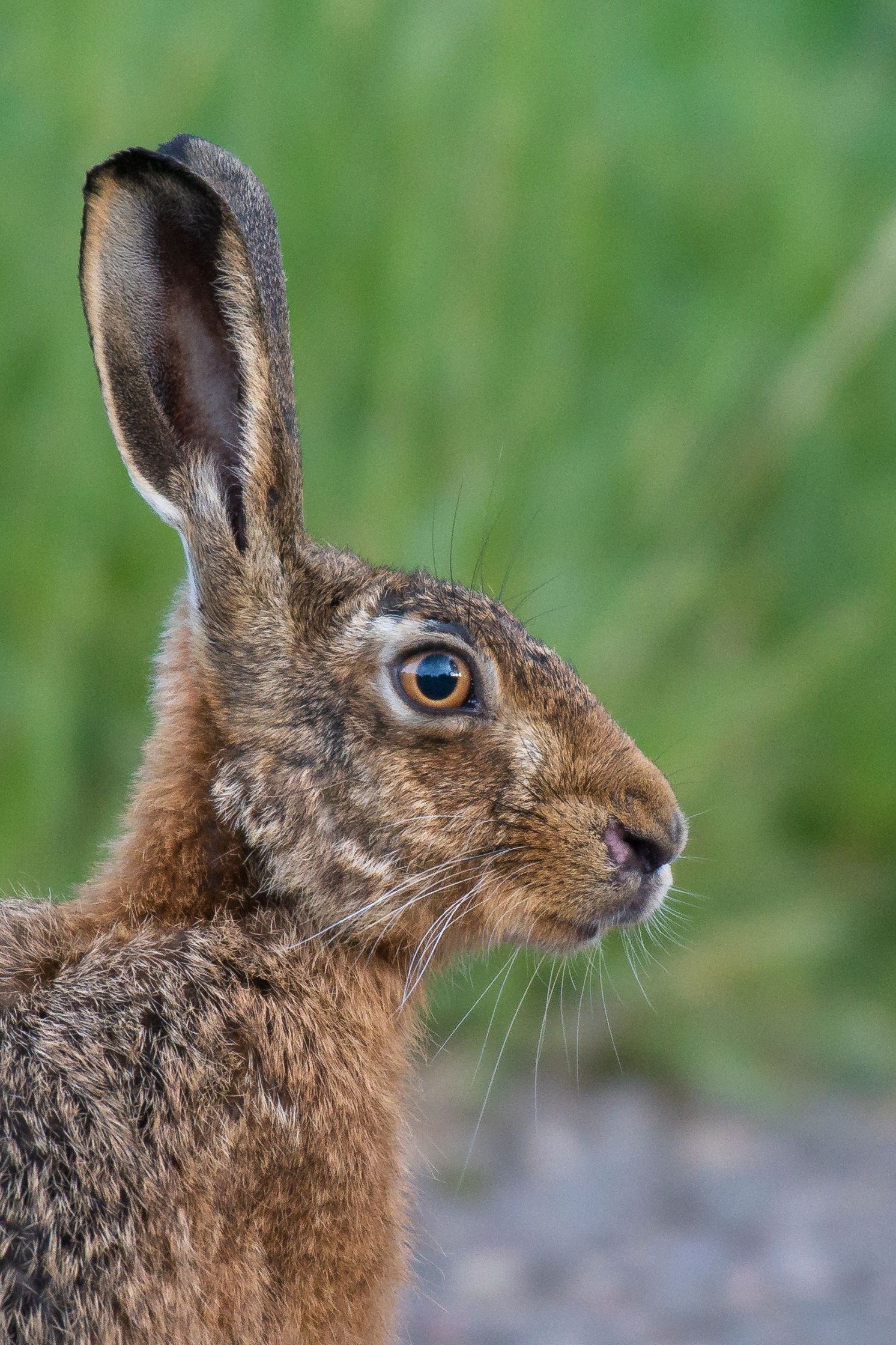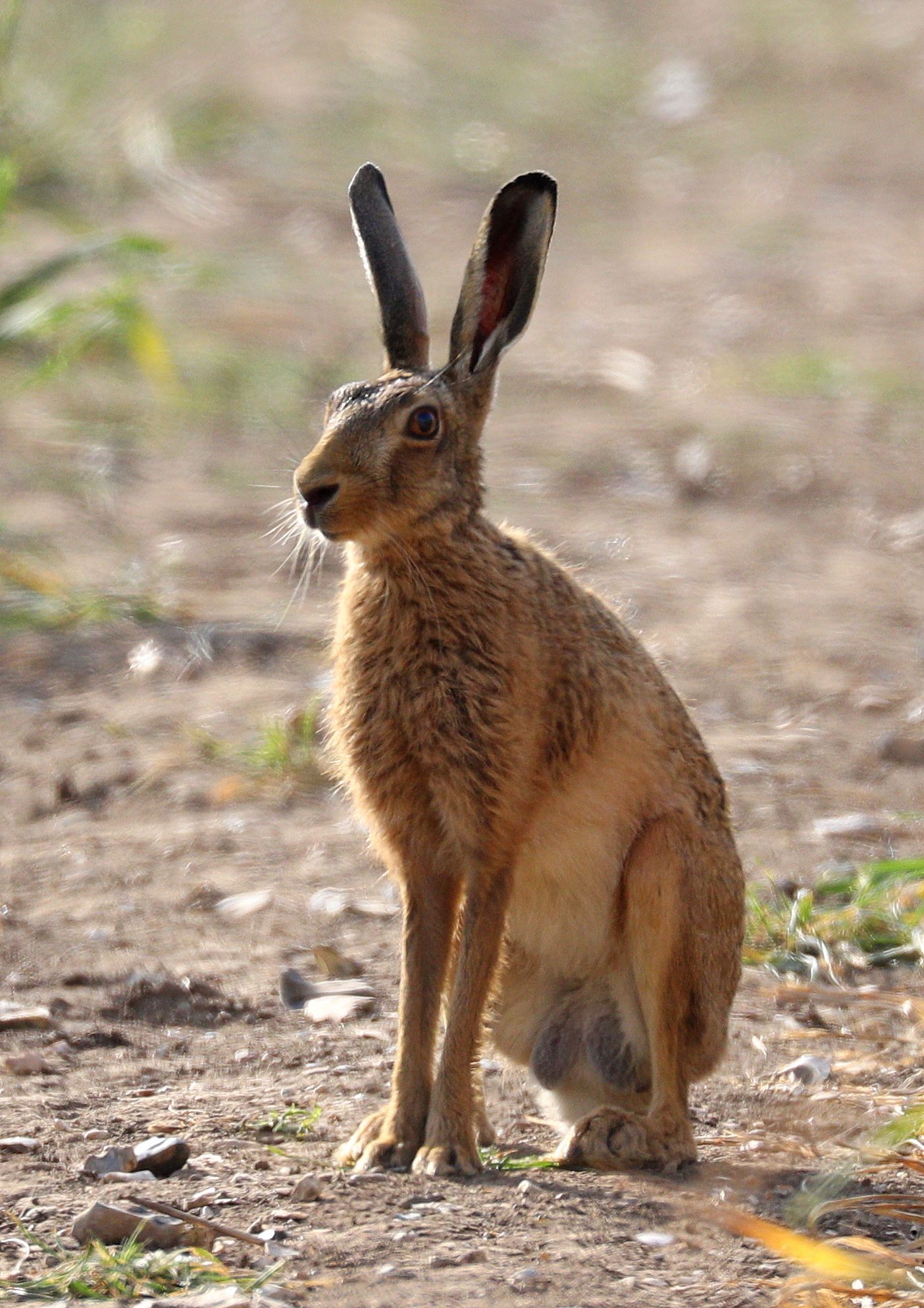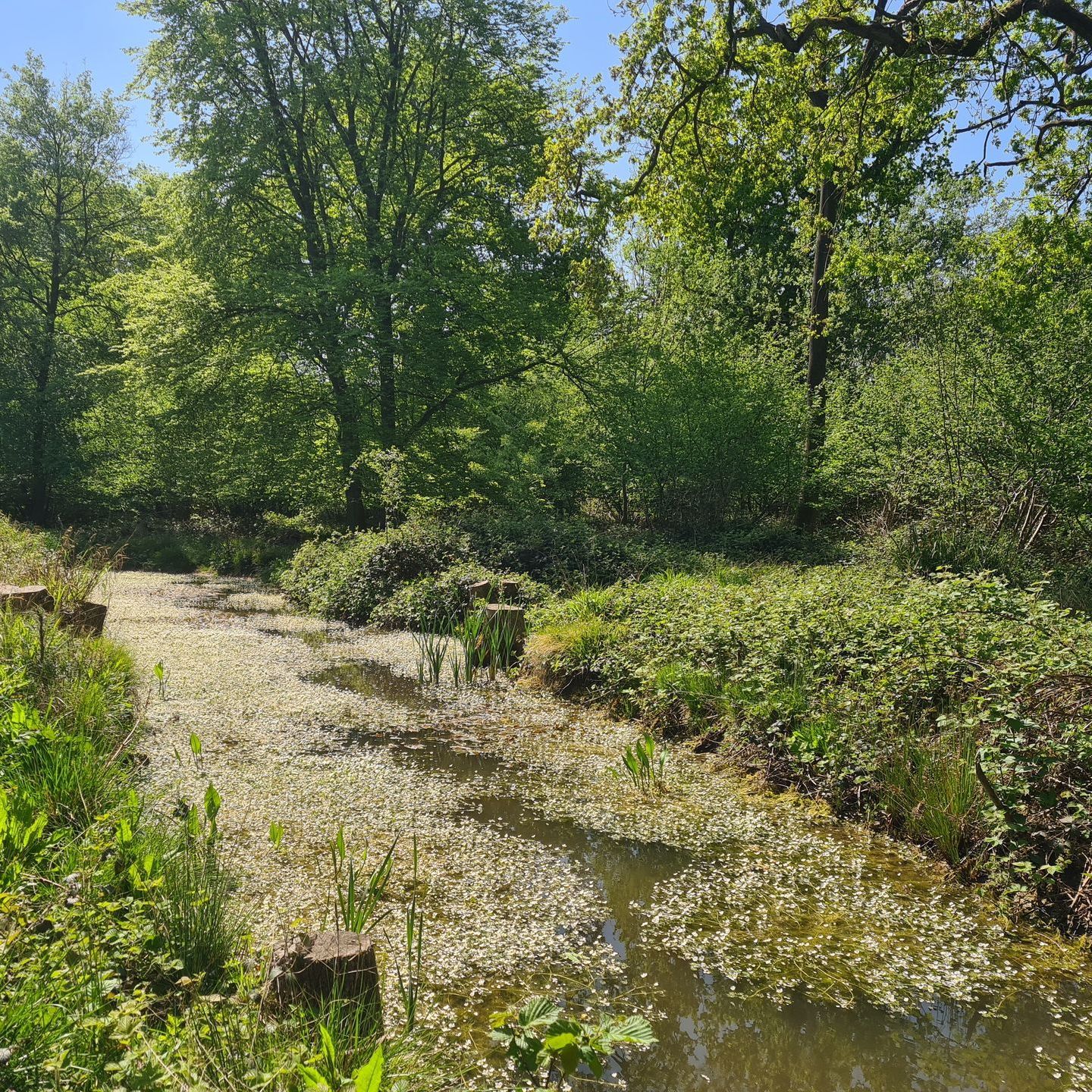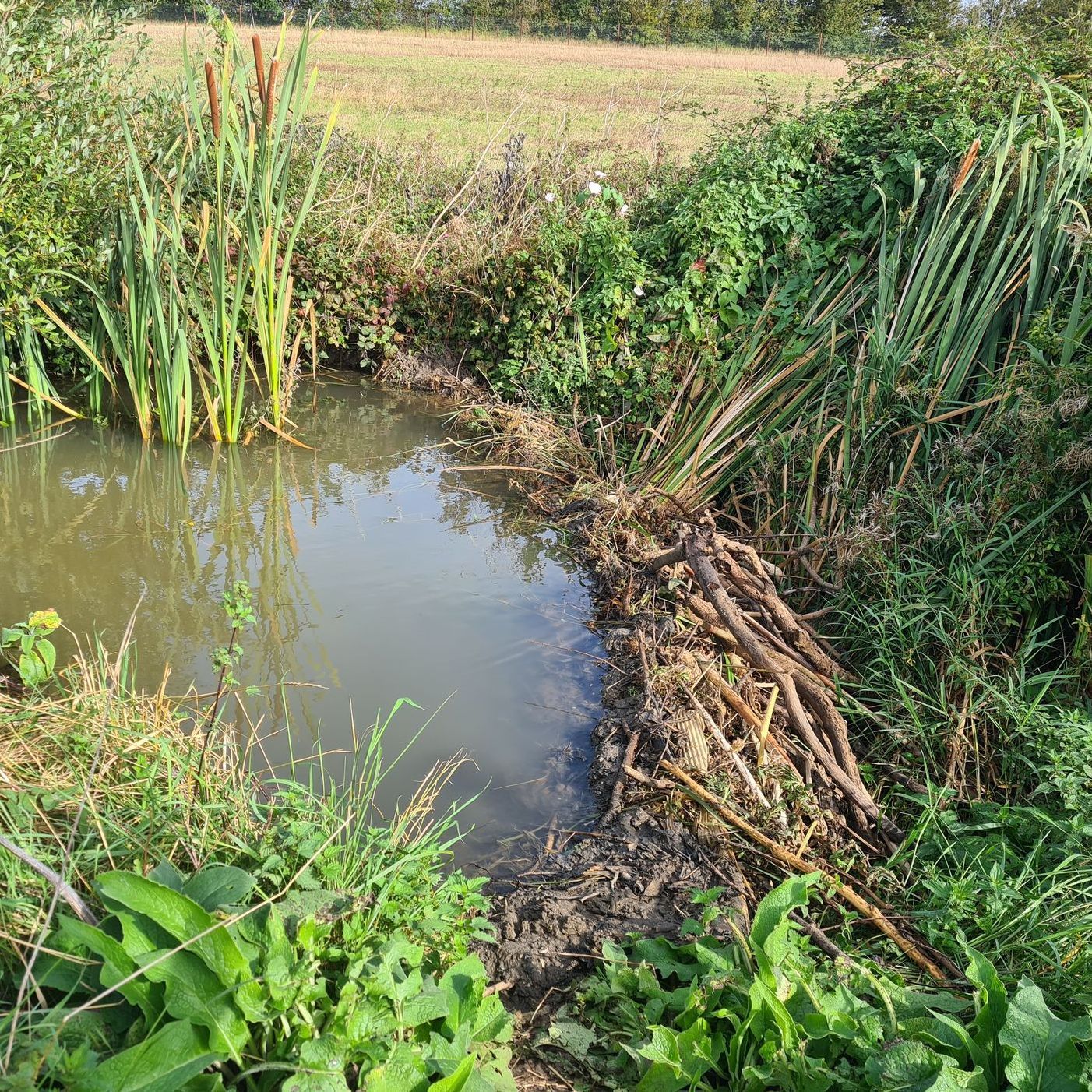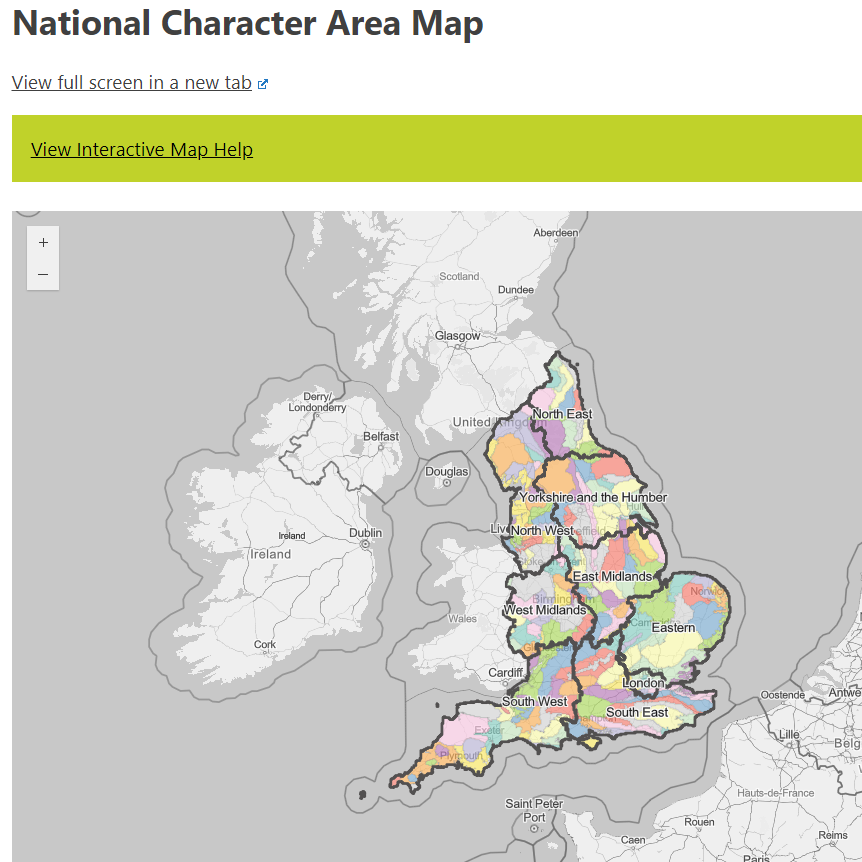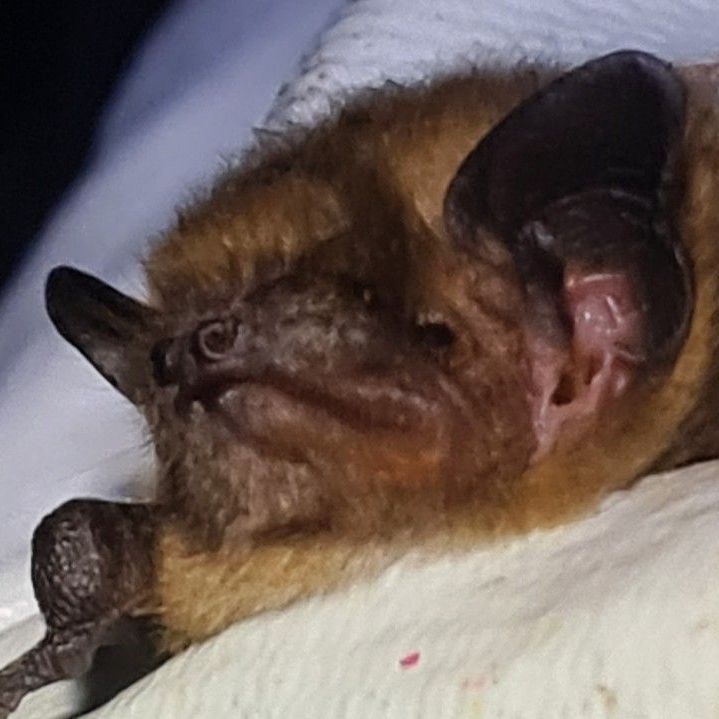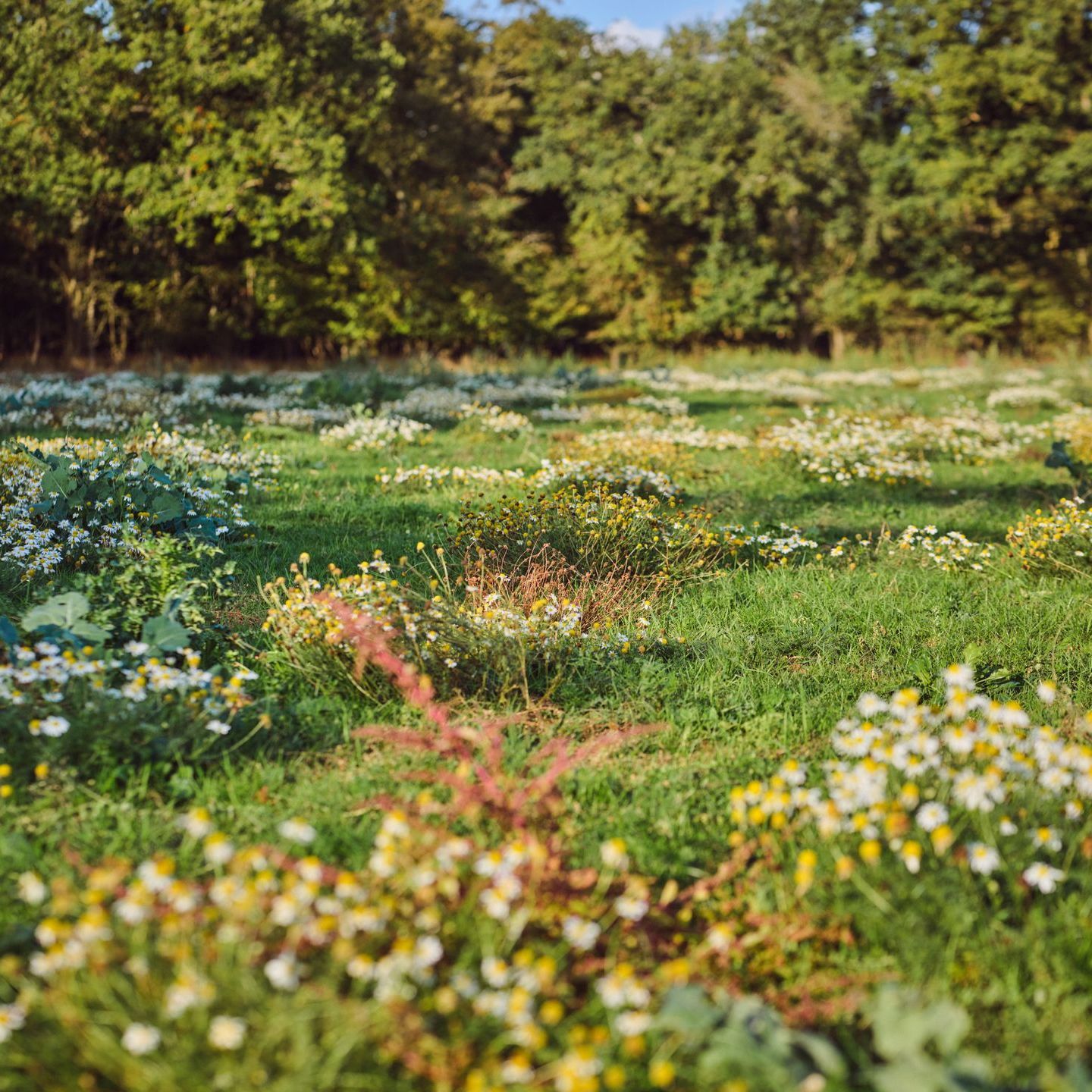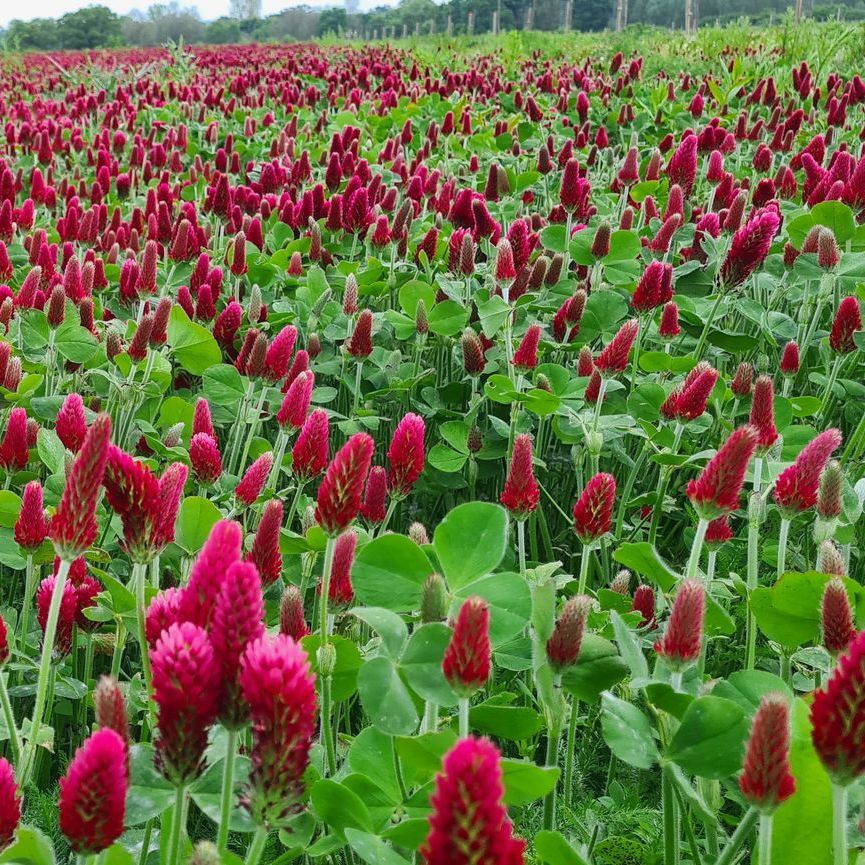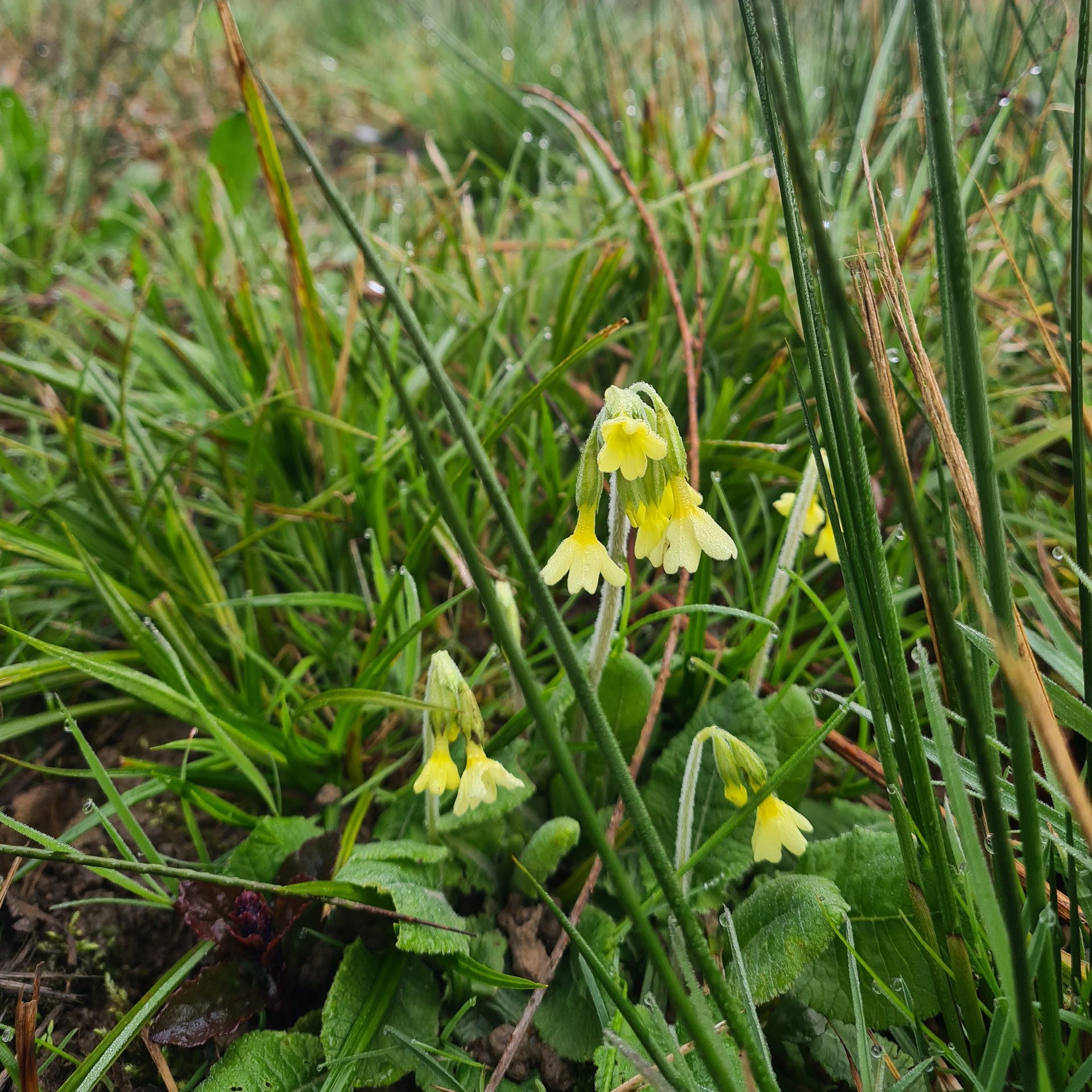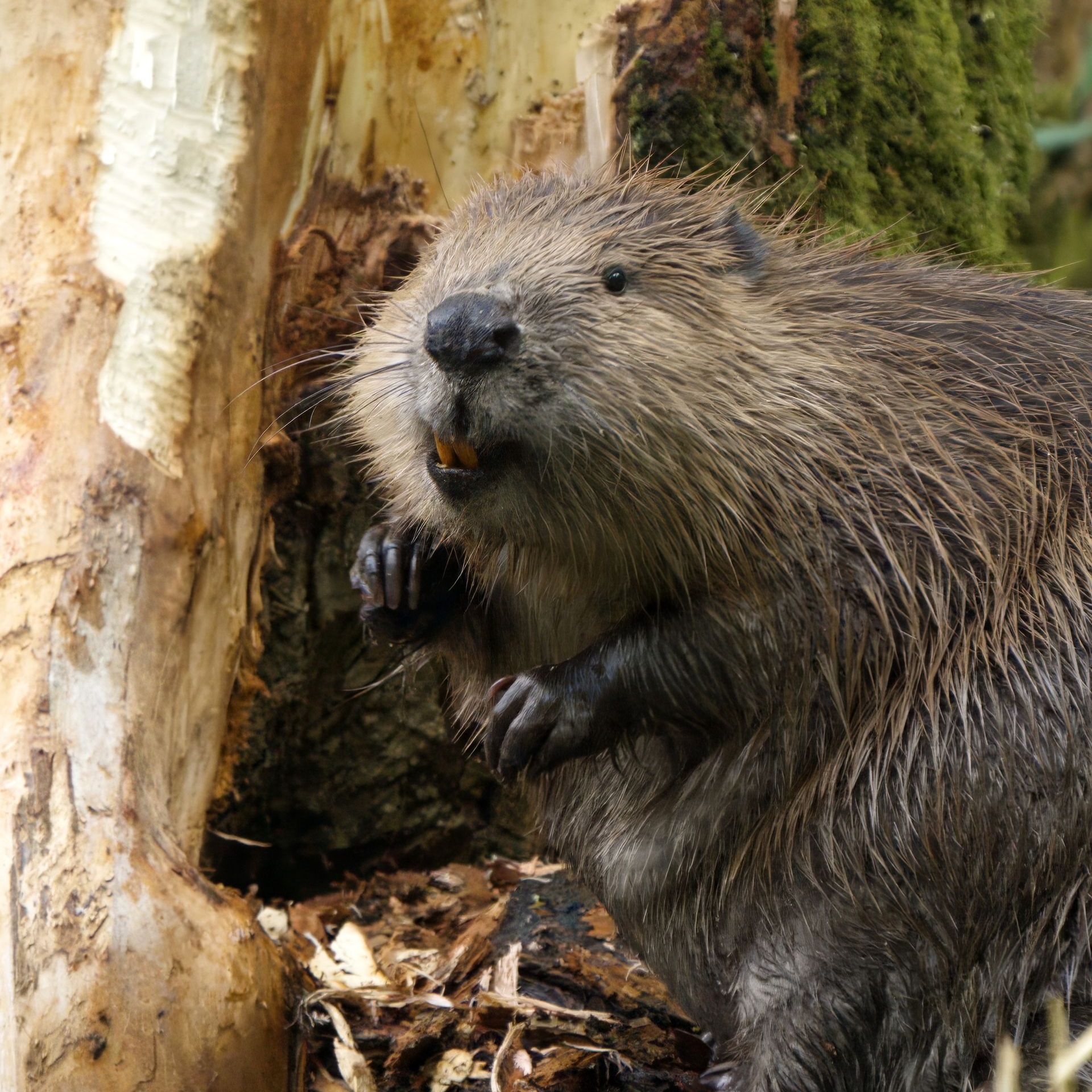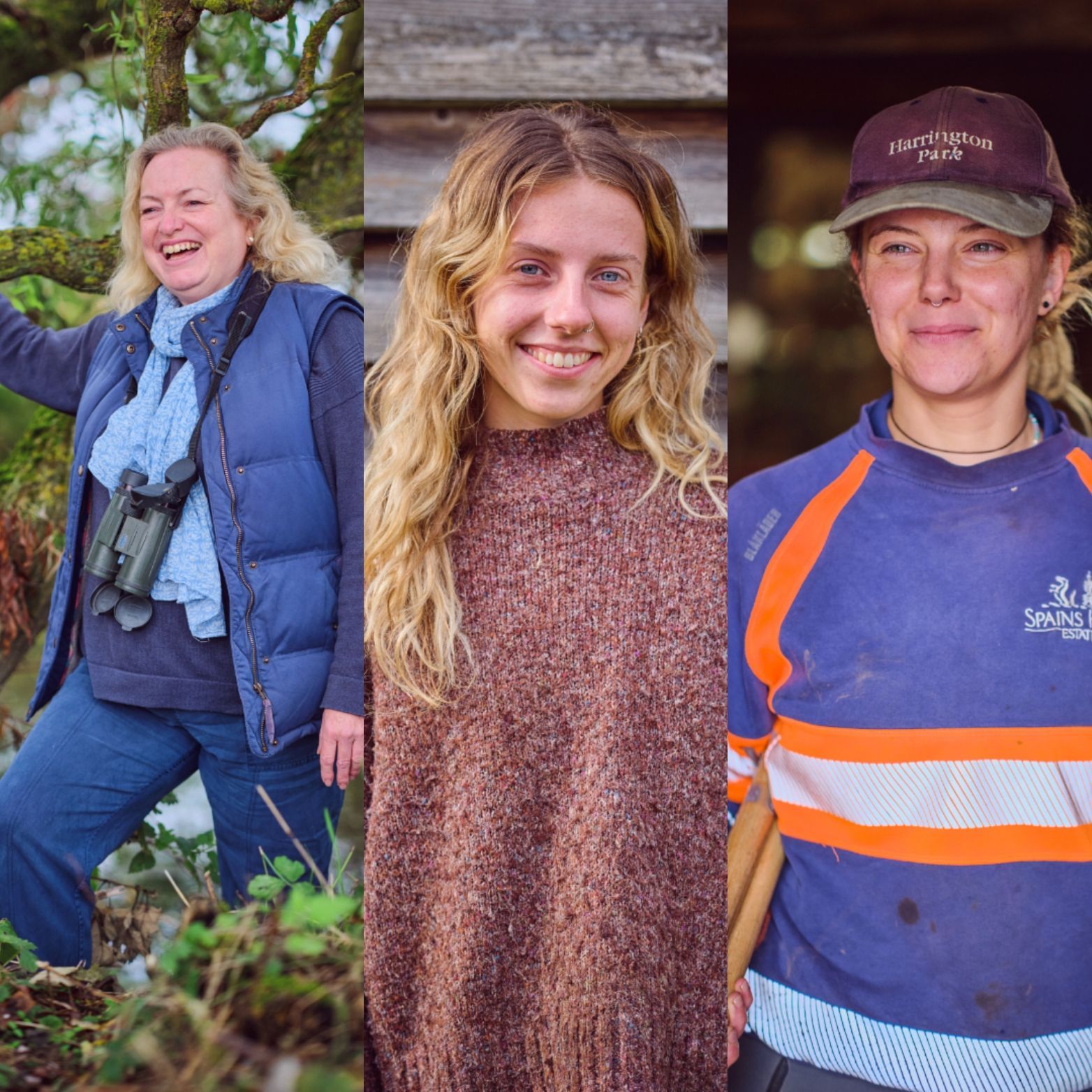Charles Darwin, I think can be forgiven for a small mistake, to originally classify hares and rabbits, as rodents! Like our beaver families on the Estate, they also have big incisor teeth and are herbivorous. However, there are clear differences which separate them into their own order of Lagomorpha. Unlike rodents, Lagomorphs have a second, smaller set of teeth behind their main pair, in addition to having a digestive system specifically adapted to make efficient use of the cellulose high grass and forbs they consume.
This week, whilst trying to count the large, swirling bird flocks frequenting our winter food cover for the annual GWCT Big Farmland Bird Count, I accidentally disturbed a hare laying up against the elements in a form, a shallow depression they dig. The hare sprang into action, with its long back legs enabling it to sprint off, zig zagging away from me, a short-legged ecologist, who could only look with a certain degree of envy from a rapidly increasing distance! Hares have been recorded at speeds of between 35 and 45mph, generating some serious power and acceleration from their back legs, enabling them to easily outrun their predators.
With these warmer February days giving us an early taste of spring, I regularly come across a loose gathering of hares (called a drove) bounding past me, completely oblivious to my presence, with only passion on their minds! The female hare, known as a ‘jill,’ is only in heat for a few hours, releasing pheromones that send the male hares, known as ‘jacks’ into a frenzied chase, with the jill defending her virtue by standing up on her hind legs and using her front paws to ‘box’ away the over-amorous jacks. She will often continue to give the jacks the run around for several hours, effectively testing their stamina, thus ending up with the most persistent and fittest jack to mate with. Darwin’s ‘survival of the fittest’ rings true in my mind.
The jill can have three to four litters in a season, with courtship typically peaking during March, giving rise to the phrase ‘Mad March Hare’! Two to three leverets are born fully furred per litter, relying upon their camouflage and remaining quite still in cover as their defence against predation. GWCT research showed that predator control explained 46% of the variation in hare population change. The jill usually returns to her young once a day, usually at dusk, to suckle the leverets, who graduate to eating vegetation after about twelve days and are weaned by around thirty days.
Brown hares are associated with open ground, such as farmland, moving around the landscape according to food availability, feeding mainly at night, and resting up during the day, sometimes in sheltered woodland pockets adjacent to fields. High densities are typically associated with a mosaic of habitats, where throughout the year, there is always some young, short grass, forbs and woody growth to eat.
Mixed farming, with its grazed pastures alongside both winter and spring cropping, has historically provided this habitat mosaic.
On the Estate, I am beginning to see the Ecological Landscape Plan emerge on the ground, which even at this early stage is already starting to provide a diverse habitat mosaic for hares. Last winter’s cereal stubbles ‘greened up’ beautifully with cereal volunteers, annual grasses and weeds, attracting hares to congregate on these fields at night. This spring, whilst some stubble areas remained, the agroforestry alleys, courtesy of the Countryside Stewardship Scheme and Hamish, our neighbouring friendly contractor, now contain an array of different habitats establishing within each field; perennial and bi-annual winter bird food covers, weedy fallows, autumn sown bumblebird mix, floristic areas, tussocky grasses and pollen and nectar mixes, all providing hares with year-round forage and shelter.
Other habitats within the Ecological Landscape Plan such as successional areas of mixed scrub, new broad-leaved woodland pockets, flower-rich neutral grassland, floodplain grazing meadows and beaver-created wetlands have all been set aside for the provision of off-site Biodiversity Net Gain. Rodents living alongside Lagomorphs, creating and benefiting from a ‘patchwork quilt’ of habitats across the Estate landscape - I think Darwin would approve!


